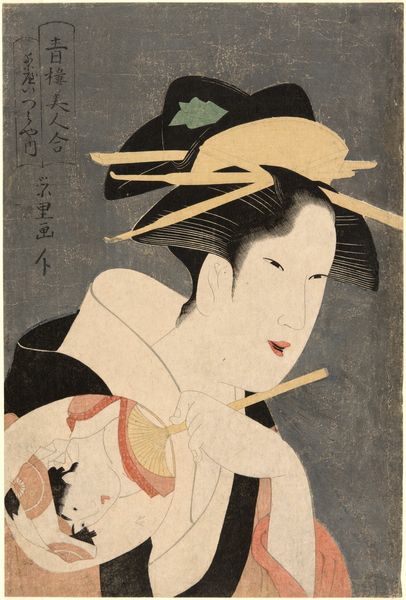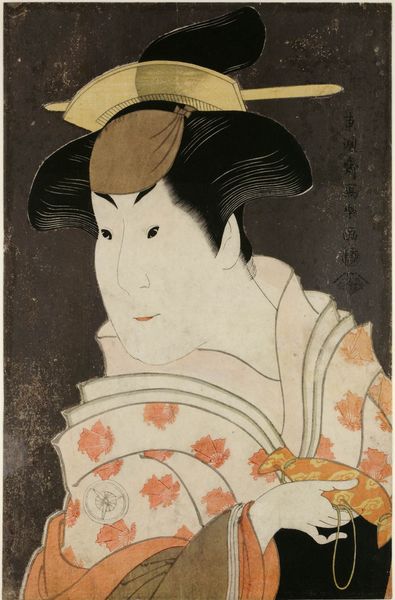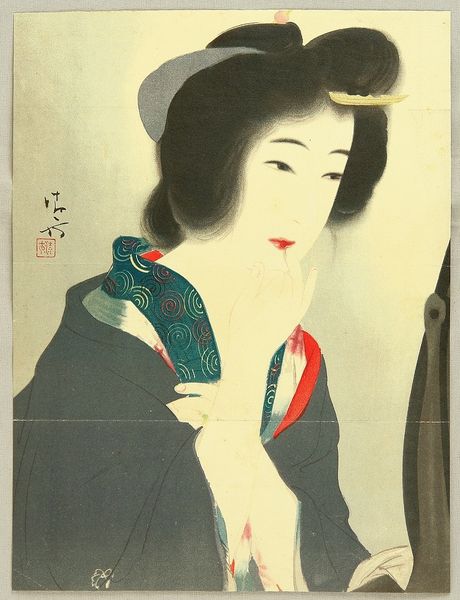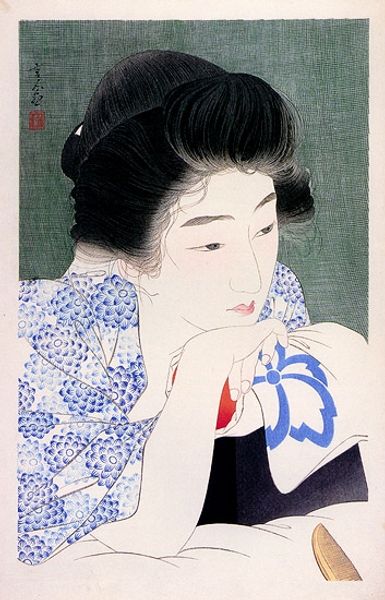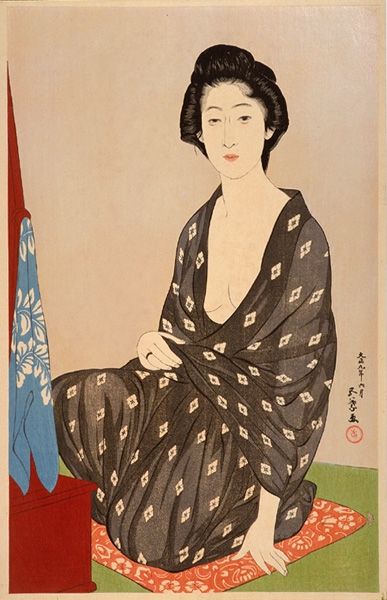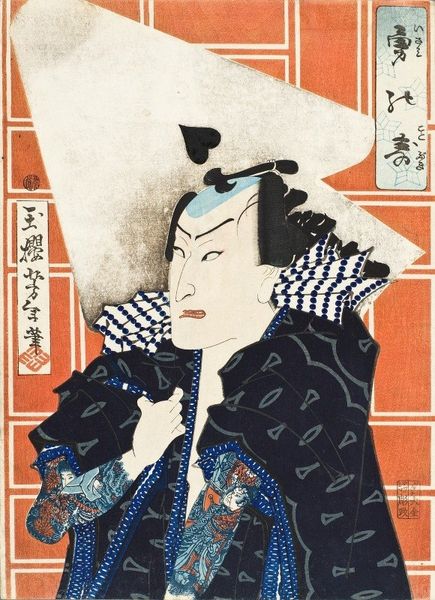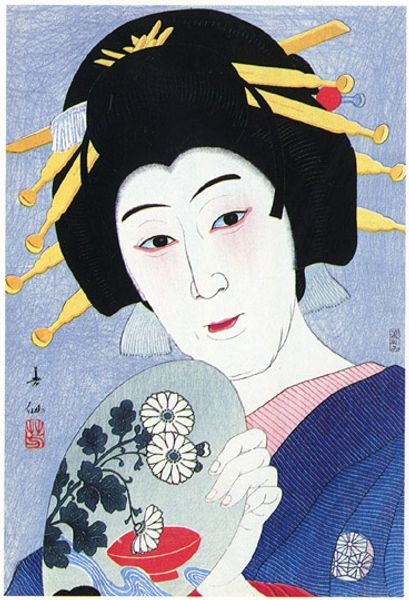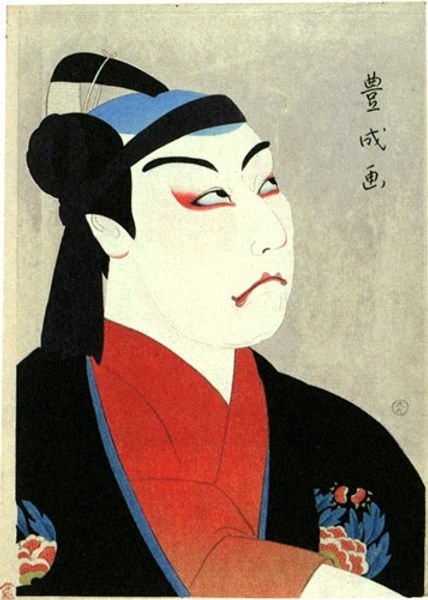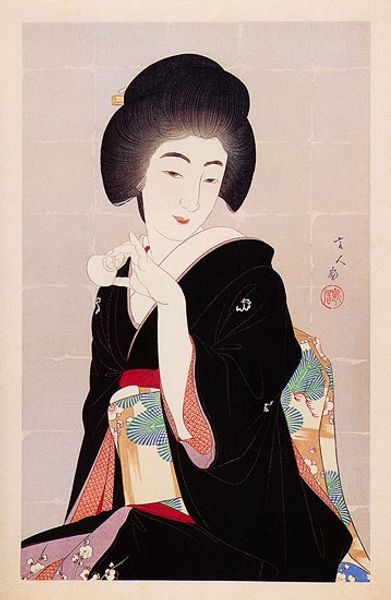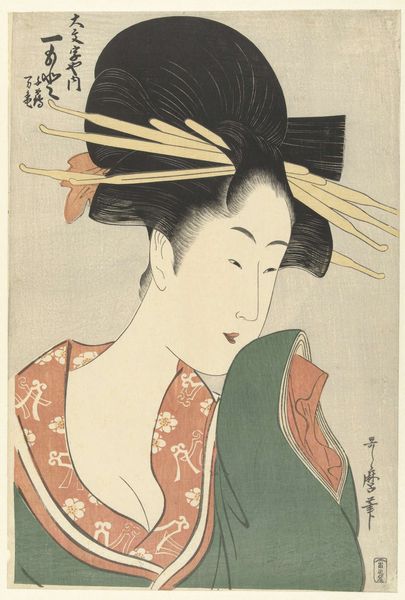
Copyright: Public domain
Yamamura Toyonari created this print of Nakamura Utaemon V as Owasa in Japan, during the early to mid-twentieth century. Kabuki is a classical Japanese dance-drama known for its elaborate costumes, stylized movements, and distinctive makeup, and prints like this were a popular form of publicity. The print utilizes the stylistic elements of ukiyo-e, or "pictures of the floating world," a genre of Japanese art that flourished from the 17th through 19th centuries. These woodblock prints often depicted scenes from urban life, including actors, courtesans, and landscapes. What's interesting here is that Toyonari made this print in the 20th century, well after ukiyo-e had begun to decline, suggesting a conscious revival of traditional aesthetics and cultural values. Understanding this print requires us to delve into the social and cultural history of Japan during this time. Further research into the Kabuki theatre, the status of actors, and the artist’s training might help us understand the changing role of traditional art forms in modernizing Japan.
Comments
No comments
Be the first to comment and join the conversation on the ultimate creative platform.


